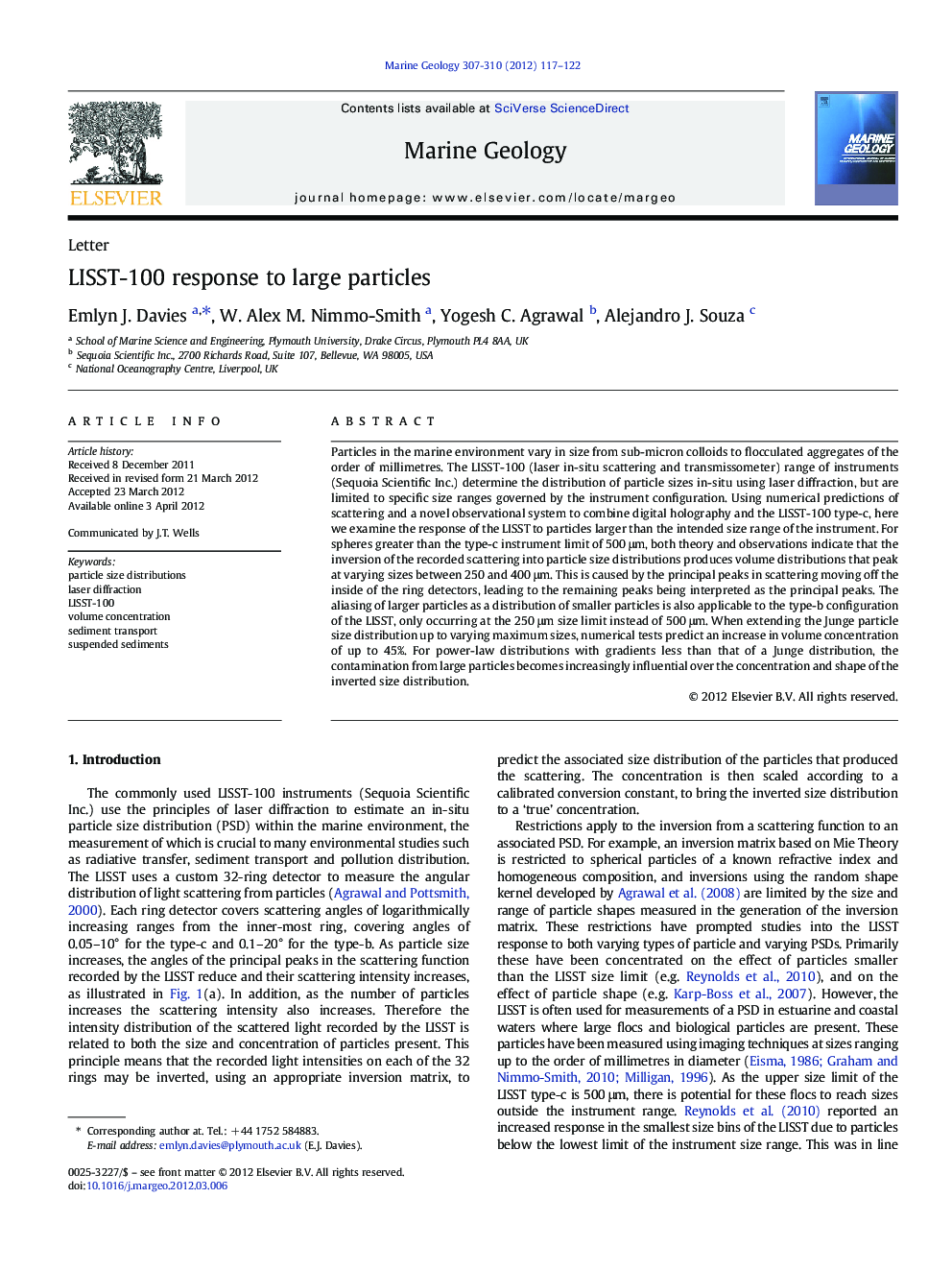| Article ID | Journal | Published Year | Pages | File Type |
|---|---|---|---|---|
| 4718570 | Marine Geology | 2012 | 6 Pages |
Particles in the marine environment vary in size from sub-micron colloids to flocculated aggregates of the order of millimetres. The LISST-100 (laser in-situ scattering and transmissometer) range of instruments (Sequoia Scientific Inc.) determine the distribution of particle sizes in-situ using laser diffraction, but are limited to specific size ranges governed by the instrument configuration. Using numerical predictions of scattering and a novel observational system to combine digital holography and the LISST-100 type-c, here we examine the response of the LISST to particles larger than the intended size range of the instrument. For spheres greater than the type-c instrument limit of 500 μm, both theory and observations indicate that the inversion of the recorded scattering into particle size distributions produces volume distributions that peak at varying sizes between 250 and 400 μm. This is caused by the principal peaks in scattering moving off the inside of the ring detectors, leading to the remaining peaks being interpreted as the principal peaks. The aliasing of larger particles as a distribution of smaller particles is also applicable to the type-b configuration of the LISST, only occurring at the 250 μm size limit instead of 500 μm. When extending the Junge particle size distribution up to varying maximum sizes, numerical tests predict an increase in volume concentration of up to 45%. For power-law distributions with gradients less than that of a Junge distribution, the contamination from large particles becomes increasingly influential over the concentration and shape of the inverted size distribution.
